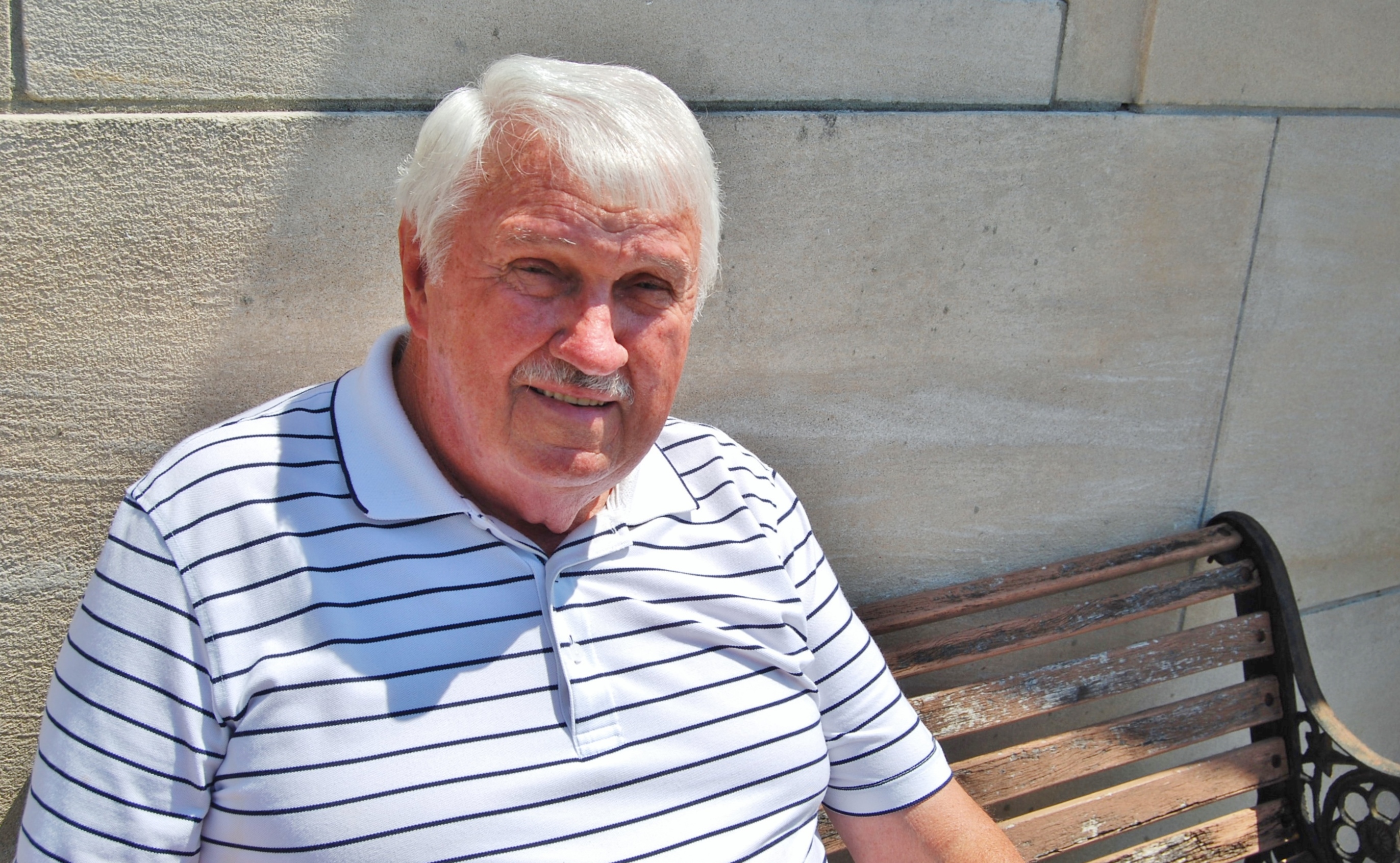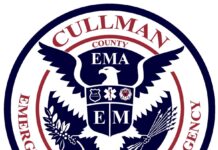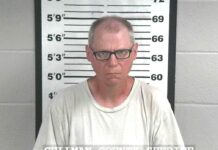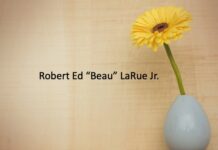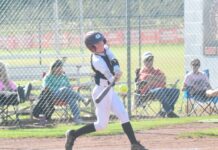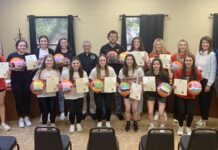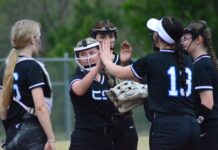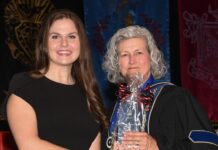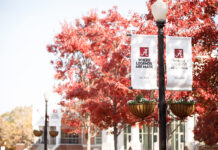Earl Smith, formally an explosives expert with the USAF, spoke to the Cullman Rotary last week. / Loretta Gillespie
Airman 1st Class, Earl T. ‘Buster’ Smith, Explosive Ordnance Disposal (EOD) Tech was one of the first two people on the scene on Jan. 24, 1961, when an Air Force plane, “Keep 19” crashed 12 miles north of Seymour Johnson Air Force Base. It came to rest in a tobacco field just a few yards away from Big Daddy’s Road in the farming community of Faro, North Carolina. The plane was carrying two bombs reported to be 250 times more powerful than either of the bombs dropped on Japan in WWII.
CULLMAN – Last week’s meeting of the Cullman Rotary Club was especially interesting to the history buffs present. Speaker Earl Smith held the group spellbound with his true story of heroism during what could have been the worst nuclear disaster of all time, had it not been for his quick thinking.
Humble about the experience now, he was duty-bound not to speak of it for the past 50 years. Due to the time limit on the Freedom of Information Act, he is now at liberty to tell his story. Even so, he probably wouldn’t have gone public with it, had not one of his superior officers tried to claim credit for the whole recovery of the nuclear bombs that fell from the sky and landed in a little wide spot in the road called Faro, North Carolina.
Since going public about the incident, Smith has spoken to several groups in North Carolina, including the Rotary of Goldsboro, North Carolina, and was filmed by the “Tar Heel Traveler,” which is similar to “Absolutely Alabama.” The film was shown at last week’s meeting in Cullman. It detailed how the plane carrying two bombs reported to be 250 times more powerful than either of the bombs dropped on Japan in WWll, crashed in the middle of one of the coldest nights on record at the time.
“It would have changed the whole coast line of the United States, the map would look different today,” Smith said.
He began the story by telling the audience that he and his cousin were in town from the farm on a Saturday afternoon when they noticed a recruitment office. “Let’s go in there and make the recruiting officer think we’re going to join the Army,” he said, jokingly. “By that afternoon we were on a bus to be inducted into the Air Force,” he laughed.
He was only 24 years old when he received the call in the middle of the night. Within a half hour, the young soldier would be in a helicopter with a five star brigadier general at his side. He admits to being nervous.
“When we landed, the whole countryside was red from the fire,” he recalled. “I imagined that there was radiation everywhere and went into a panic attack, thinking that I was breathing it and was about to die.”
He says that in the distance, the flashing lights of an ambulance seemed to work to steady his nerves and he thought, “Well, if I’m about to die I might as well get as much done as possible,” and he went to work on the one bomb that he could clearly see. Its parachute had caught in a tree in the middle of some farmer’s field, and was a clear indication of the first bomb’s location. The second bomb was another story…
“The other one went underground, parts of it were found, but the uranium is still buried down there somewhere in that field,” he said. “To give you an idea of how big the hole was where we dug in an effort to find it, there were five or six bulldozers down in the bottom of it at one point, but still, it was never found.”
Smith laughed when he remembered that one local resident of the area thought that the Russians had landed in the field. “You can imagine the sight, all the fire and noise, and that big parachute coming down out of nowhere. The man grabbed a pone of cornbread and took off away from the explosion. When they found him a couple of days later, sitting under a tree, he was relieved to know that the Russians hadn’t taken over the country.”
Smith answered questions after his story was told. Someone asked about the land as it is now. “The government bought it up and no one can use it for anything,” he replied, “but it’s not even fenced in or anything.”
The story has been picked up by several newspapers, magazines and even a French documentary producer, who came and filmed Smith on the actual location where the near disaster took place in North Carolina. Smith says that it took about two days to film his part of the story. “The producer said that it will probably be a year or so before it’s shown in France. Then it will go to National Geographic, I think,” he said. The film is titled, “The Cold War.” The story was President John F. Kennedy’s first press release.
Read Smith’s entire story as printed in The Cullman Tribune last September here: www.cullmantribune.com/articles/2016/09/11/north-alabama-man-plays-critical-part-disarming-nuclear-weapon
Rotary Program Chairs
- 1st Quarter: Mike Krassick
- 2nd Quarter: Dawn Owens
- 3rd Quarter: Vicki Karolewics
- 4th Quarter: John Lang
Copyright 2017 Humble Roots, LLC. All Rights Reserved.

